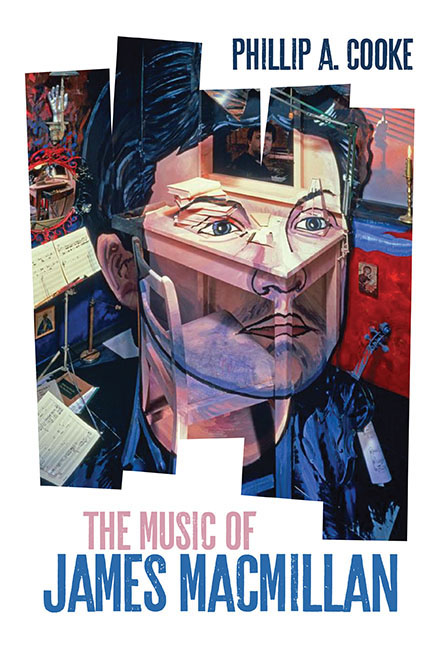Book contents
- Frontmatter
- Contents
- List of Plates
- List of Tables
- List of Music Examples
- Foreword
- Prologue
- Acknowledgements
- Permissions
- 1 The Keening – Cumnock, Edinburgh and Durham
- 2 The Tryst – Glasgow and the Road to Isobel Gowdie
- 3 Scots Songs – The Confession of Isobel Gowdie, Tuireadh and Veni, Veni, Emmanuel
- 4 A Different World – Visitatio Sepulchri, Seven Last Words from the Cross and Inés de Castro
- 5 Changed – Triduum and Quickening
- 6 Raising Sparks – ‘Scotland's Shame’, Politics and A Scotch Bestiary
- 7 A New Song – Mass and MacMillan 's Choral Renaissance
- 8 After Virtue – Symphony No. 3, The Sacrifice and the St John Passion
- 9 Serenity – Violin Concerto, Clemency and the St Luke Passion
- 10 Tu es Petrus – Bellahouston Park and the Return to Cumnock
- List of Works and Recordings
- Bibliography
- Index of Works by James MacMillan
- General Index
9 - Serenity – Violin Concerto, Clemency and the St Luke Passion
Published online by Cambridge University Press: 31 August 2019
- Frontmatter
- Contents
- List of Plates
- List of Tables
- List of Music Examples
- Foreword
- Prologue
- Acknowledgements
- Permissions
- 1 The Keening – Cumnock, Edinburgh and Durham
- 2 The Tryst – Glasgow and the Road to Isobel Gowdie
- 3 Scots Songs – The Confession of Isobel Gowdie, Tuireadh and Veni, Veni, Emmanuel
- 4 A Different World – Visitatio Sepulchri, Seven Last Words from the Cross and Inés de Castro
- 5 Changed – Triduum and Quickening
- 6 Raising Sparks – ‘Scotland's Shame’, Politics and A Scotch Bestiary
- 7 A New Song – Mass and MacMillan 's Choral Renaissance
- 8 After Virtue – Symphony No. 3, The Sacrifice and the St John Passion
- 9 Serenity – Violin Concerto, Clemency and the St Luke Passion
- 10 Tu es Petrus – Bellahouston Park and the Return to Cumnock
- List of Works and Recordings
- Bibliography
- Index of Works by James MacMillan
- General Index
Summary
Amidst the outpouring of choral pieces and grand Wagnerian statements from James MacMillan in the 2000s there was a new, unexpected strand to the composer's work that began to take shape in the latter part of the decade and has become an important facet of his oeuvre ever since: the move to a greater form of abstraction in his orchestral and chamber works. For a composer whose reputation was built on tone-poems and concerti with evocative, programmatic names (none more so than his calling card The Confession of Isobel Gowdie), the move to more generic, autonomous titles was an unusual one, but one that MacMillan was aware of nonetheless, as he stated in 2007:
More recently, I've noticed that I've been leaving the extra-musical starting points behind. I don't know if this is a new direction or not. This might come as a surprise to the people who see me as someone who has this other aspect, but I've always written abstractly. Perhaps I'm just moving into another phase now, where the theology and the pre-musical are much more subliminal, taken for granted.
MacMillan may have ‘always written abstractly’, but his body of work in the 1980s and 1990s has few purely abstract pieces, the Piano Sonata (1985), the Sinfonietta (1991) and the Cello Sonata No. 1 (1999) being examples from a small pool. It is telling that even those pieces that traditionally had generic titles such as the string quartet and the symphony are given extra-musical names by MacMillan – the first two quartets are titled Visions of a November Spring and Why is this night different? and the symphony contains the poetic addendum ‘Vigil’ – and his early concerti have some of the most programmatic titles of all the composer's works. However, 2007 does appear to have been something of turning-point for MacMillan, for although the year was dominated by the St John Passion and works from The Strathclyde Motets, two substantial chamber works were composed, neither of which had any overt pre-compositional stimuli: the String Quartet No. 3 and the Horn Quintet.
- Type
- Chapter
- Information
- The Music of James MacMillan , pp. 183 - 204Publisher: Boydell & BrewerPrint publication year: 2019



